Xi’an is the capital of Shaanxi Province. It is the most populous city in Northwest China, as well as one of the three most populous cities in Western China, the other two are Chongqing and Chengdu. “Xi’an” is the atonal pinyin romanization of the Mandarin pronunciation of its name 西安, which means “Western Peace”. The name was adopted in 1369 under the early Ming dynasty. The Terracotta Army is a collection of terracotta sculptures depicting the armies of Qin Shi Huang, the first Emperor of China. It is a form of funerary art buried with the emperor in 210–209 BCE with the purpose of protecting the emperor in his afterlife. The figures, dating from approximately the late third century BCE, were discovered in 1974 by local farmers. Estimates from 2007 were that the three pits containing the Terracotta Army held more than 8,000 soldiers, 130 chariots with 520 horses, and 150 cavalry horses, the majority of which remained buried in the pits near Qin Shi Huang’s mausoleum.
Xi’an (chinesisch: 西安), ist die Hauptstadt der chinesischen Provinz Shaanxi und eine der 15 Unterprovinzstädte Chinas. Xi’an besitzt eine nahezu vollständig erhaltene Stadtmauer und war der Ausgangspunkt der Seidenstraße. Die Stadt ist Sitz der Universität Nordwestchinas und Ausgangspunkt für Besichtigungen der Terrakotta-Armee. Das Mausoleum Qín Shǐhuángdìs ist eine frühchinesische Grabanlage, errichtet für den ersten chinesischen Kaiser Qín Shǐhuángdì. Mit dem Bau wurde im Jahr 221 v. Chr. begonnen, und der Kaiser wurde im Jahre 210 v. Chr. darin beigesetzt. Es ist einer der weltweit größten Grabbauten und vor allem bekannt für seine großen Soldatenfiguren, die sogenannte „Terrakotta-Armee“.
西安市,古称长安、京兆、镐京,位于中国中部,现为国家中心城市、陕西省省会,是陕西省的政治、经济、文化、交通、医疗、教育中心。西安拥有3000余年的文明史、建城史和1077年的建都史,历史上曾有包括周、秦、汉、隋、唐等在内的共13个中原朝代在此建都,也是汉唐时期丝绸之路的起点。西安是中国历史上强盛的统一王朝建都最多的古都,在西安定都的周、秦、汉、唐,代表了中国帝王时期开放、外向、尚武、繁荣的顶峰。秦始皇兵马俑,又称秦始皇陵兵马俑、秦陵兵马俑、秦兵马俑,位于陕西省西安市临潼区西阳村。秦始皇陵建于公元前246年至公元前208年,历时39年,是中国历史上秦朝皇帝秦始皇的陵墓,也是中国第一个规模宏大、布局讲究且保存完好的帝王陵寝,现存陵冢高76米,陵园布置仿秦都咸阳,分内外两城,内城周长2.5公里,外城周长6.3公里。陵冢位于内城西南,坐西面东,放置棺椁和随葬器物的地方,为秦始皇陵墓建筑群的核心,目前尚未发掘完成。

Xi’An Bell Tower 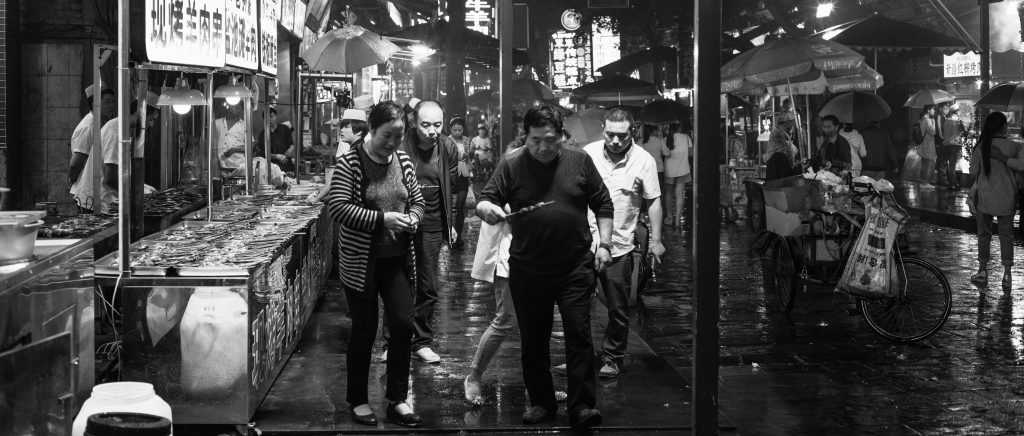
Muslim Quarter in Xi’An 
Muslim Quarter in Xi’An 
Street food in Xi’An 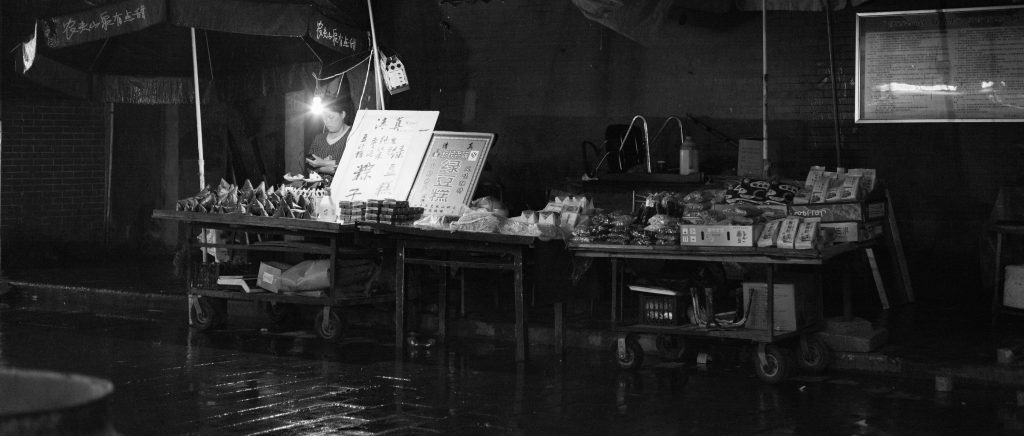
Street food in Xi’An 
Street food in Xi’An 
Our taxi drive in Xi’an 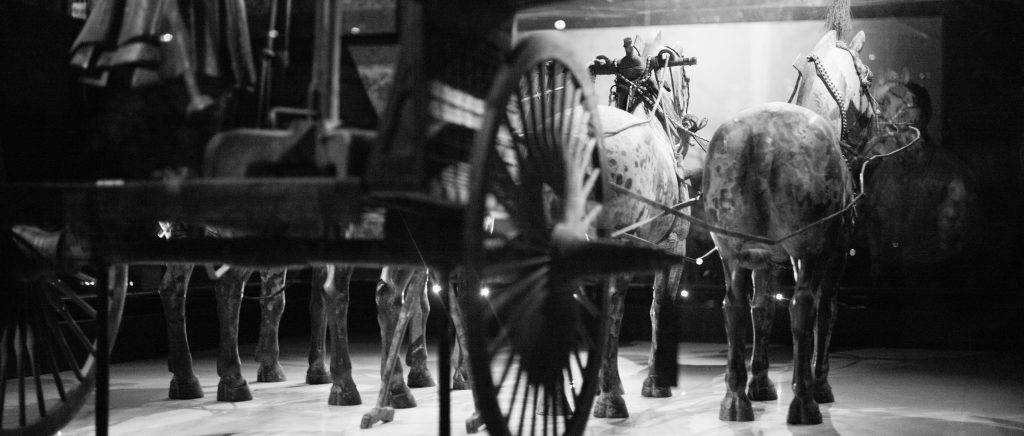
Bronze chariot for the emperor with 3064 components 
Bronze chariot for the emperor with 3064 components 
View of Pit 1, the largest excavation pit of the Terracotta Army 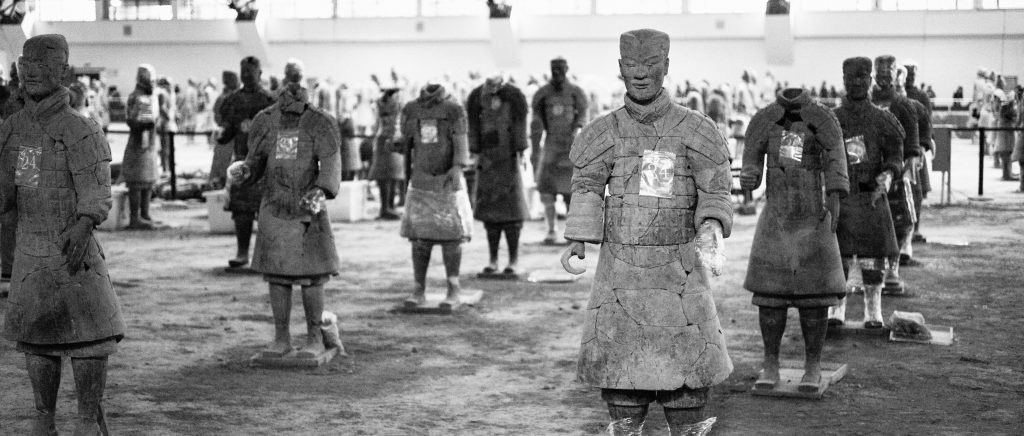
The Terracotta Army waiting for rebirth 
Archaeologist try to recovery the Terracotta Army from Pit 2 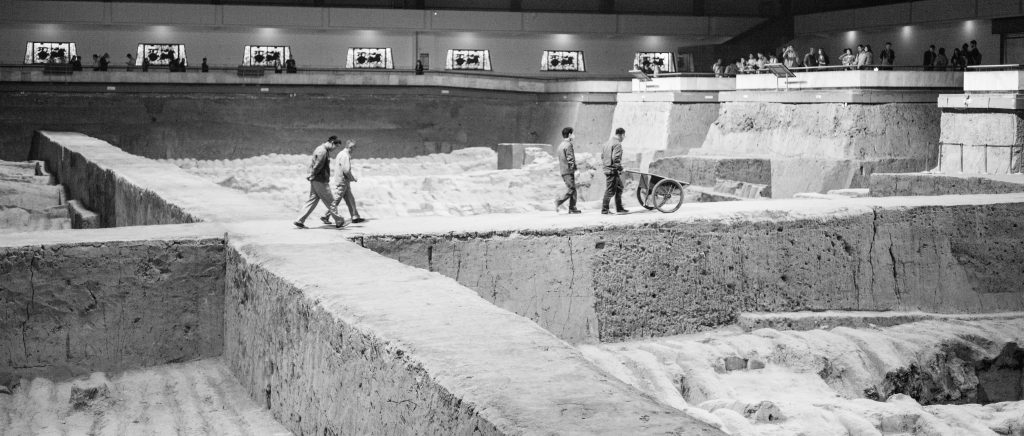
Archaeologist working in Pit 2 of the Terracotta Army 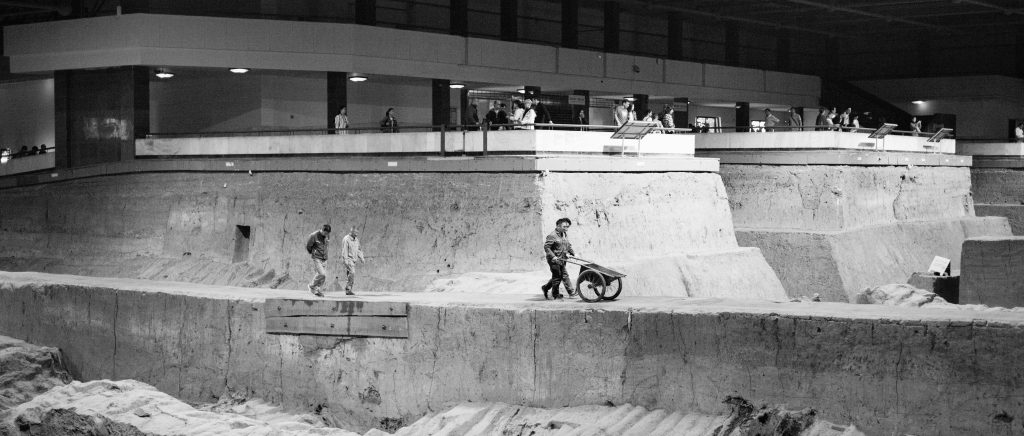
Archaeologist working in Pit 2 of the Terracotta Army 
Archaeologist working in Pit 2 of the Terracotta Army
西安这座城市,被一种隐约的神秘感和烟火气环绕着。在这里我们能看见我们能看见的,而我们不知道我们还有什么不知道。经历了漫长历史变迁的西安,有着太多已经无人知晓的秘密。岁月的变迁促进了众多在这里共同生活的民族的融合,一个最直接的效果就是西安的美食成为了一种独一无二的存在。比较一些历史上没发生过民族融合的地方,比如英国,它们的饮食就比较单一而且还不太好吃。西安的美食应该刚好是这种名族融合地区食物好吃的理论的一个很有说服力的例证。在这里我们没来的及待很久,但弥漫在西安大街小巷里的浓浓的烟火气还是给我们这些在国外呆久了的人一些久违的温暖的感觉。
关于兵马俑我还想多说一句话,我始终无法理解,这么重要的文物,作为防护的在仅仅是一个巨大的棚子,没有恒温恒湿设备,直接跟室外联通。这样真的好吗,我们这么大的国家真的缺这点设备么?!我真的是很困扰!
